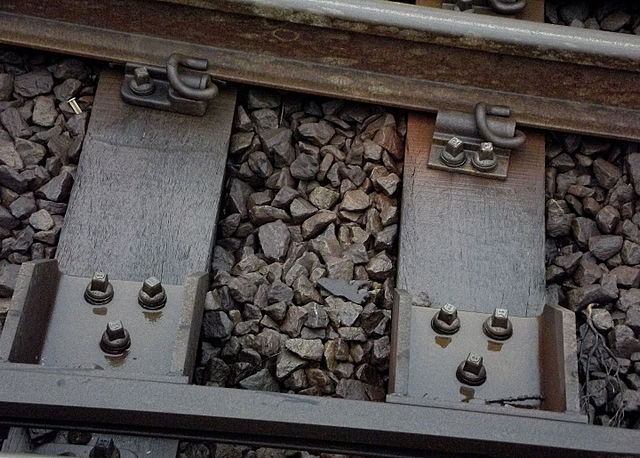A railroad switch (AE), turnout, or [set of] points (CE) is a mechanical installation enabling railway trains to be guided from one track to another, such as at a railway junction or where a spur or siding branches off.
A right-hand railroad switch with point indicator pointing to right
Large stations may have hundreds of normal and double switches (Frankfurt am Main main station, Germany).
Abt switch used in the 1895-built Dresden Funicular Railway (photo of 1985)
Control stand of a defunct railroad switch on the way from Pyin Oo Lwin to Goteik viaduct (Myanmar)
A railway track or railroad track, also known as a train track or permanent way, is the structure on a railway or railroad consisting of the rails, fasteners, railroad ties and ballast, plus the underlying subgrade. It enables trains to move by providing a dependable surface for their wheels to roll upon. Early tracks were constructed with wooden or cast iron rails, and wooden or stone sleepers; since the 1870s, rails have almost universally been made from steel.
New railway concrete sleeper
Traditional railway track showing ballast, part of sleeper and fixing mechanisms
Track of Singapore LRT
Ballastless high-speed track in China








